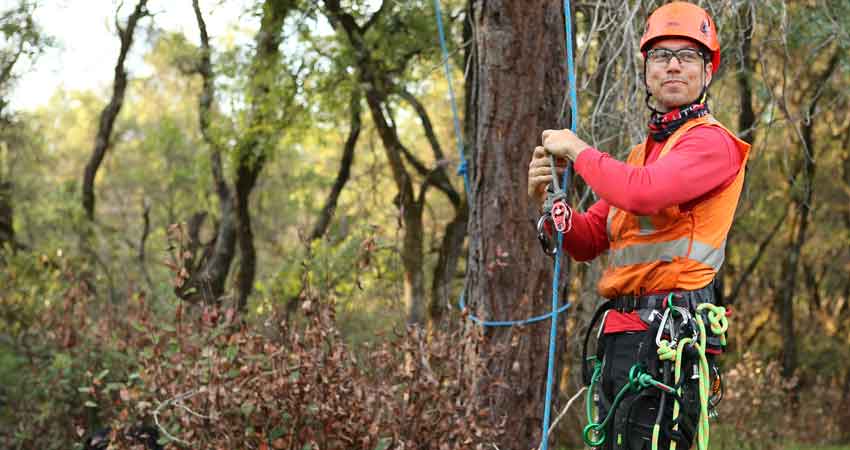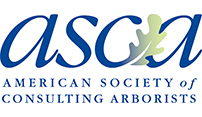ISA Certified Consulting Arborists
Our ISA Certified Arborists are willing and available to provide consulting and any pertinent or necessary Arborist Reports. Whether you are looking for an assessment of tree health or are in need of a Certified Arborist report for city planning and developing, we have you covered.
What is an Arborist Report?
Arborist reports give detailed information regarding the health and condition of a tree, documents any causes or concerns such as disease or structural damage, and offers recommendations for each tree in question. Some recommendations my include site remediation, fertilization, pest control, pruning, and/or removal.
We provide timely arborist reports to ensure your job is completed to your specifications and meets City requirements. A Plus also provides complete, up to date tree inventory records on both public and private properties that deliver critical information now and in the future.


What is a TRAQ Report?
A Tree Risk Assessment Qualified (TRAQ) report is a written document that provides an evaluation of the potential risks associated with trees, including the likelihood of failure and the consequences of failure. The report is prepared by a qualified professional who has been trained and certified in the principles and practices of tree risk assessment. The assessment considers factors such as the tree’s species, location, condition, age, and structural integrity, as well as the surrounding environment, such as nearby buildings, sidewalks, and power lines. The TRAQ report provides recommendations for reducing or mitigating the risks associated with the trees and is used by property owners, tree care professionals, and local governments to prioritize tree maintenance and management activities.
Types of Tree Assessments
A tree assessment is a process of evaluating the health, structure, and safety of trees. It can involve a detailed inspection of the tree’s leaves, branches, trunk, roots, and surrounding environment to determine its current condition and potential risks. The assessment can be performed by a Certified Arborist or TRAQ Qualified tree specialist. Every tree we assess is also inventoried into ArborPlus, our tree care app, and web access for our clients.
Tree assessments can be used to develop a management plan for trees, including recommendations for maintenance, pruning, or removal. Tree assessments are important for ensuring the health and safety of the tree and its surrounding environment.
There are generally 3 levels of tree assessments:
LEVEL I TREE ASSESSMENT
This is our standard level of assessment when performing tree assessments and inventories. A level I tree assessment is a basic evaluation of a tree’s overall health and safety. This type of assessment typically includes a visual inspection of the tree from the ground. The Arborist or tree specialist may look for signs of disease, pests, damage, and structural weaknesses. The assessment can include a review of the tree’s growth and development patterns, including crown density and canopy spread. A level I assessment does not include any intrusive methods such as drilling, excavation, or soil testing. The purpose of a level I assessment is to identify any immediate concerns that need to be addressed, but it is not a comprehensive analysis of the tree’s long-term health and stability.
LEVEL II TREE ASSESSMENT
A level II tree assessment is a more comprehensive evaluation of a tree’s structure, health, and stability. It involves a thorough inspection of the tree’s crown, trunk, root system, and surrounding area, including the soil and other environmental factors. The assessment includes a detailed analysis of the tree’s physical condition, including its growth pattern, branching structure, and any signs of disease or damage. The purpose of a level II tree assessment is to identify any potential hazards or structural weaknesses that could pose a risk to people, property, or the environment. This information can then be used to develop an Arborist Report and/or management plan to ensure the tree’s long-term health and stability.
LEVEL III TREE ASSESSMENT
A Level III Tree Assessment is a comprehensive evaluation of the health and safety of a tree, or trees, in an urban or suburban landscape. This assessment is conducted by a Certified Arborist or Consulting Arborist and involves a thorough examination of the tree or trees. Depending on the purpose and goal, this assessment can include the following factors:
- Crown density and structure
- Trunk and branch size and condition
- Leaf and bark analysis
- Root system assessment
- Soil analysis
- Site conditions and environmental factors
- Pest and disease diagnosis
- Assessment of tree stability and safety
The aim of a Level III Tree Assessment is to identify any potential hazards and provide recommendations for improving the health and safety of the trees, including pruning, fertilization, and removal of diseased or dead wood. This type of assessment is often performed for large, mature trees that are deemed important for the urban canopy and often require a more in-depth evaluation, an aerial inspection, and additional tools.
Performing an Aerial Inspection
An aerial tree inspection is a process of examining the condition and health of a tree’s canopy from an aerial perspective. This type of inspection involves a climber who is also a Certified Arborist and navigates throughout the crown of the tree to look for signs of damage, decay, or disease that may affect its stability and health. The aerial inspection is commonly used by arborists, forestry professionals, and property managers to assess the safety and maintenance needs of trees in urban and rural areas.
Using a Resistograph
A resistograph is a tool used in tree assessment to determine the internal structure and health of a tree. BENEFITS of using a resistograph in tree assessment include:
- Non-invasive: The resistograph does not physically damage the tree, as it measures the resistance of the wood as the drill bit moves through it.
- Accurate measurements: The resistograph provides accurate measurements of the density and hardness of the wood, which can indicate the presence of decay, rot, or other internal issues.
- Quick assessment: The resistograph can quickly provide a comprehensive assessment of a tree’s internal structure, allowing for quicker decision making regarding the tree’s management or removal.
- Reduced risk: Using a resistograph reduces the risk of making incorrect assessments based on visual inspections alone, which can be misleading.
Overall, the resistograph is a valuable tool in tree assessment as it provides valuable information about a tree’s internal structure and health, enabling arborists to make informed decisions about tree management and preservation.
LIMITATIONS of a Resistograph include:
- Depth Limitation: A resistograph is limited to measuring the internal resistance of wood in a single direction, usually horizontally, to a depth of only a few centimeters.
- Error in Measurement: The accuracy of the resistograph depends on the skill of the operator, as well as the size, type, and condition of the tree being tested. There is a risk of errors in measurement if the instrument is not used correctly.
- Inadequate for Large Trees: The resistograph is not suitable for large trees, as the machine is limited in size and may not be able to reach the center of the tree.
- Non-Destructive Test: Although the resistograph is a non-destructive test, it can still cause damage to the tree if used excessively or improperly.
- Not Indicative of Tree Health: The resistograph can only provide information about the strength of the wood and does not provide any information about the overall health of the tree.
- Only Measures Wood Strength: The resistograph is limited to measuring the resistance of wood and cannot assess other factors such as disease, decay, or pests that can weaken the tree.

Board Certified Master Arborists
A Plus Tree boasts a Board Certified Master Arborist (BCMA) on staff which is the HIGHEST credentialed certification offered by ISA. This certification is the pinnacle of an arboricultural professional and to obtain this certification required extensive scenario-based knowledge and exam completion and candidates pursuing this certification must abide by a Code of Ethics, which ensures the quality of work.
To understand how rare this certification is, fewer than 2% of all ISA Certified Arborists currently hold this designation.

Registered Consulting Arborists (RCA)
A Plus Tree also has a Registered Consulting Arborist (RCA) which is ASCA’s (American Society of Consulting Arborists) highest level of membership. In order to achieve this level, one must graduate ASCA’s Consulting Academy and must have earned 420 Continuing Education Units (CEUs) to meet the education requirement. An RCA designation demonstrates a commitment to providing clients with the highest quality consulting services.
More and more clients and government entities are demanding RCA’s for their tree projects and A Plus Tree can provide premier RCA consulting services for those who demand the highest quality of service available.
